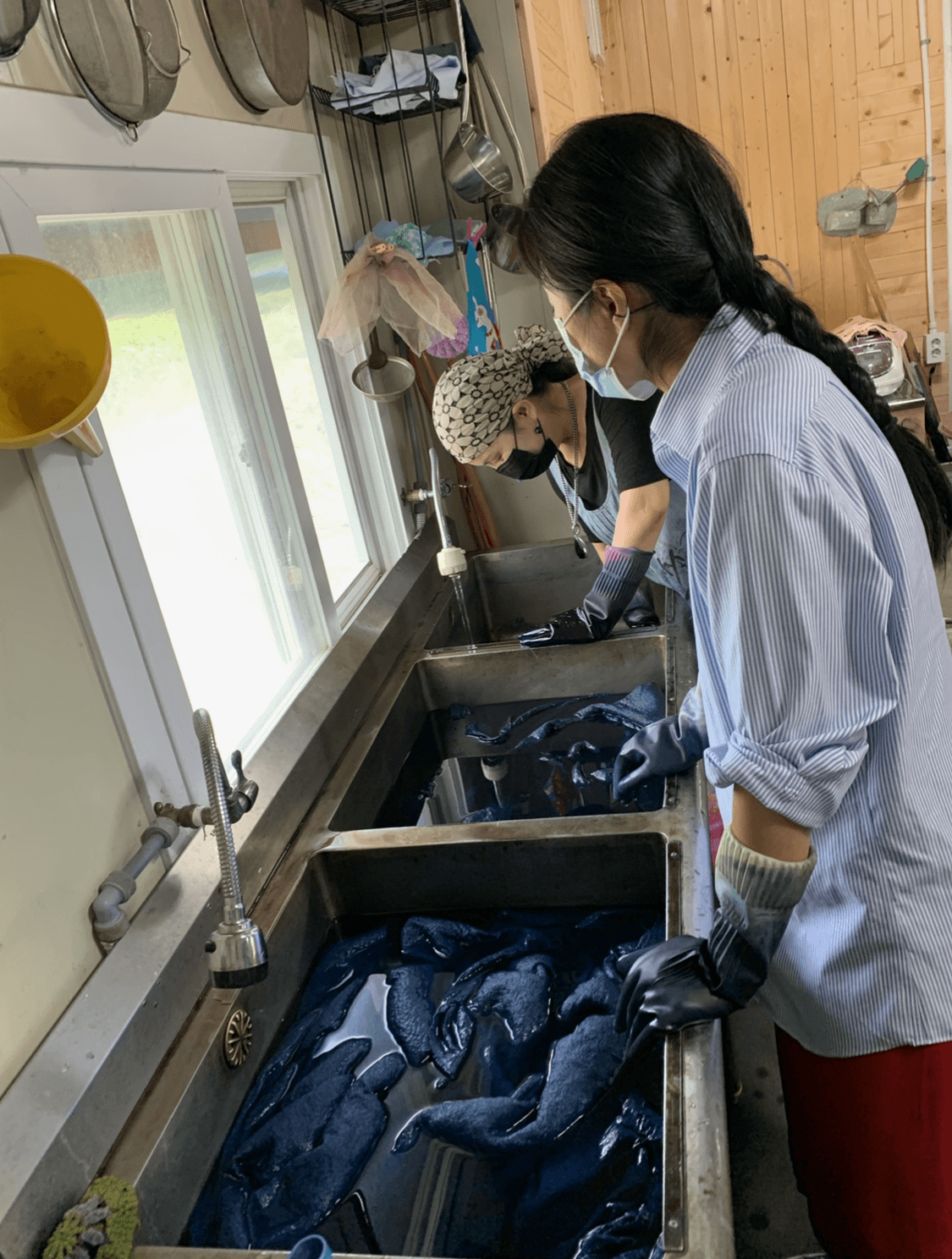Today we’d like to introduce you to Jennifer Chun.
Jennifer, we appreciate you taking the time to share your story with us today. Where does your story begin?
When the world was in lockdown during the pandemic I reconnected with my Korean heritage in a different way, after reading about Korea’s natural dyeing artisans. I had no idea Korea had their own tradition of natural dyeing techniques that predated even the formal unification of Korea. My mother was in pandemic lockdown in LA, and like so many senior citizens during that time, the isolation was incredibly lonely. I asked her to help me communicate with the natural dye artisan, since my Korean was limited. We eventually formed an online relationship with her, and she explained her back story. Her mother was also a natural dyer and taught her how to grow, cultivate, and process natural Korean resources to use as natural dyes.
Once travel restrictions were lifted, my husband and I visited my father who was in lockdown in Korea. We made arrangements to meet with the natural dyer and visited her indigo farm and studio outside of Seoul. Everything happened so organically, where she suggested we collaborate, while I developed a capsule collection based in New York City. She taught me how to cut the indigo and showed me basic processes of natural dyeing. I was able to assist her through each step from cutting to washing to dyeing to hanging the dyed yardages. The process is very hands on. You have to re-wash, re-dye and sun-dry several times to get the exact shade or color you want to achieve. There are no machines to “speed up” the process. The line developed from there and we finally took my mother the following year to meet the dyer in person. They have become pen pals. And we have continued to stay in touch, still collaborating to bring her unique elements to the line. You can see it in each Collection I have designed.
Can you talk to us a bit about the challenges and lessons you’ve learned along the way. Looking back would you say it’s been easy or smooth in retrospect?
Fashion has changed so much where consumers want items faster or cheaper because we have gotten used to mass production. I make such limited quantities that it can be a challenge working with factories who would rather produce en masse and do not want to make specialized pieces that take thought or time, as producing less can increase manufacturing prices. It’s difficult to educate consumers on this when even people in my industry aren’t aware of what goes into the whole process.
When I started with working with Korean artisans they explained having had many opportunities to mass produce … and refused to. They know that if they were to mass produce there will be wastage, i.e., some of their work would be thrown out. There is so much pride of the craft and process. They do not compromise sustainability at any cost, and I have had to assure them that I would not either, if we were to collaborate. This balance of not compromising artisan ethics with my factories has been extremely challenging. But it’s all about finding the right customers who appreciate the process.
I am really proud that I have been able to bring my Korean American heritage into my design, but I have to focus on truly designing with a thoughtful process — maintaining sustainability as a small brand. None of this is easy or formulaic but it is a new and interesting challenge.
Alright, so let’s switch gears a bit and talk business. What should we know about your work?
The line was developed from collaborating with Korean artisans and incorporating fabrics developed in Korea – including hand dyed materials and fabrics purchased in traditional markets around the country.
I then constructed them into limited edition pieces to ensure minimal waste in New York City’s garment district, designed with my “uniform” aesthetic. I design knits and wovens in New York City and Los Angeles using stock/leftover fabrics, trims and yarns so that I am not producing new yardages.
We also developed pillows for the first time in 2023 for our first home collection. We used the leftover pieces to make scrunchies in a mix of traditional Korean and contemporary materials, representing our foray into accessories.
What does success mean to you?
I had the privilege of working with both young designers and corporate design companies, allowing me to combine my training across very different environments and perspectives. I’ve incorporated these diverse lessons, spanning across technical and artistic, when launching my own line, initially under my namesake brand that I built over 10 years, and eventually with Uniformed. These experiences have pushed me to evolve and try new things. To me success has taken on a new definition — finding the right audience that appreciates all that goes into it. I have had to thoughtfully design in a way that balances both my heritages. I think there are many people from many different ethnic backgrounds that relate to this.
Contact Info:
- Website: https://www.uniformedworld.com/
- Instagram: @uniformed_world
- Facebook: Uniformed
- Twitter: @UniformedW







Image Credits
Lookbook Photos: Guanchen Liu
Behind the Scenes Photos: No Credit


